Immerse yourself in the enchanting world of wizardry, friendships, battles, and magical mysteries with the Harry Potter series. Written by renowned British author J.K. Rowling, this series has captivated readers of all ages worldwide.
The series follows the journey of Harry Potter, an ordinary boy who discovers he is a wizard, and his life at Hogwarts School of Witchcraft and Wizardry. Through the seven books, you will experience the growth of Harry and his friends as they encounter love, loss, courage, and the arduous fight against evil.
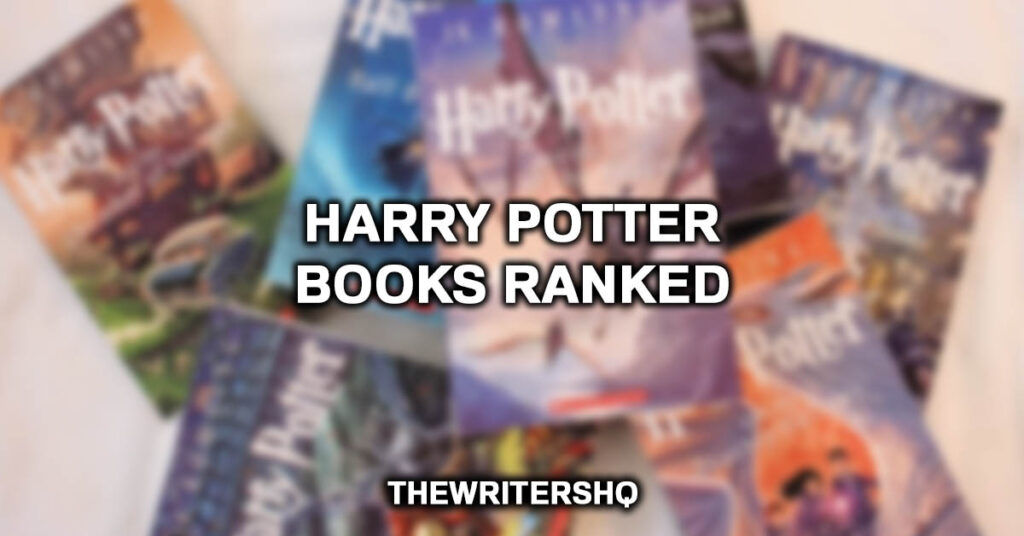
Harry Potter and the Order of The Books
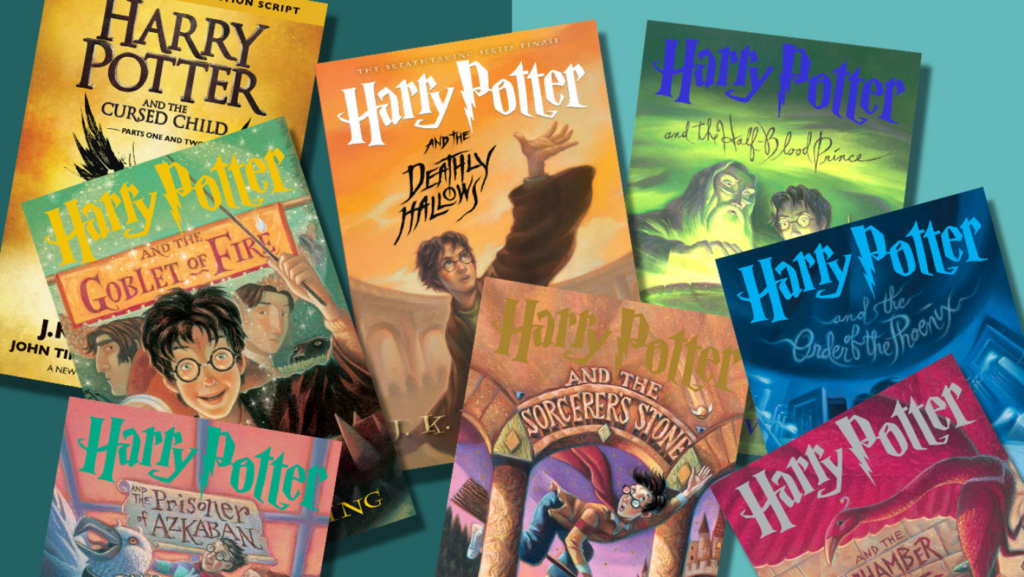
- “Harry Potter and the Philosopher’s Stone” (also known as “Harry Potter and the Sorcerer’s Stone” in the United States)
- “Harry Potter and the Chamber of Secrets”
- “Harry Potter and the Prisoner of Azkaban”
- “Harry Potter and the Goblet of Fire”
- “Harry Potter and the Order of the Phoenix”
- “Harry Potter and the Half-Blood Prince”
- “Harry Potter and the Deathly Hallows”
rank all the harry potter books from best to worst
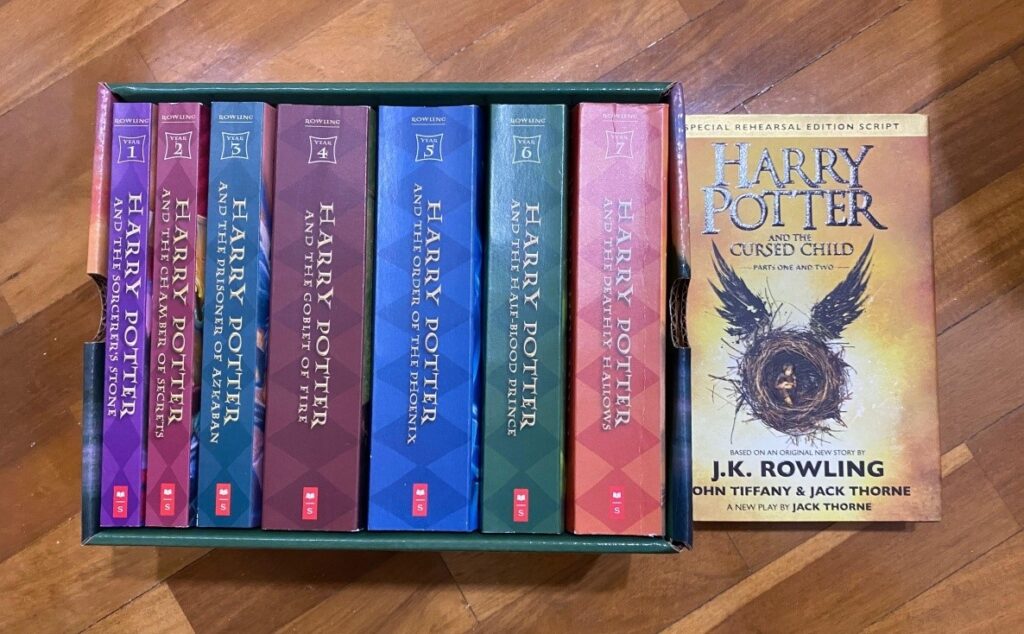
Ranking the Harry Potter books from best to worst is highly subjective and varies depending on individual preferences. However, considering the impact, readers’ responses, and critical acclaim, here’s a generalized list:
- “Harry Potter and the Prisoner of Azkaban” – Introduces new, pivotal characters and delves into more complex themes.
- “Harry Potter and the Deathly Hallows” – An epic conclusion to the series, tying up loose ends and showcasing character development.
- “Harry Potter and the Half-Blood Prince” – Provides an important backstory and sets up the final showdown.
- “Harry Potter and the Goblet of Fire” – Marks a turning point in the series with a darker tone and higher stakes.
- “Harry Potter and the Order of the Phoenix” – Shows a growing, changing wizarding world and Harry’s maturation.
- “Harry Potter and the Philosopher’s Stone” – The one that started it all, introducing us to the magical universe.
- “Harry Potter and the Chamber of Secrets” – Continues the story with expanded world-building, though lacks some of the weight of later entries.
Expert Tip: It’s important to note that every book contributes to the Harry Potter saga’s overall greatness, and many fans have their personal favorites that do not match this ranking.
Harry Potter and the Philosopher’s Stone
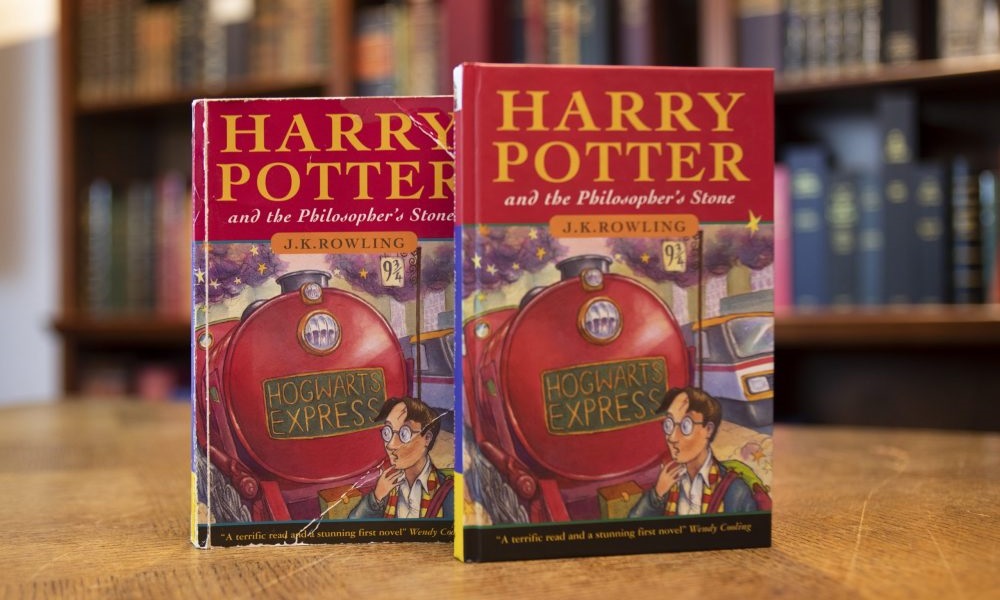
The story begins with the introduction of Harry Potter, a young boy who lives with his cruel relatives, the Dursleys, after the death of his parents. On his 11th birthday, he discovers that he is a wizard and has been invited to attend Hogwarts School of Witchcraft and Wizardry.
At Hogwarts, he makes friends and learns about the wizarding world, including the dark wizard Lord Voldemort who killed his parents. Harry, with his friends Hermione and Ron, uncovers the mystery of the Philosopher’s Stone, a magical artifact hidden in the school, and prevents Voldemort from obtaining it.
Harry Potter and the Chamber of Secrets
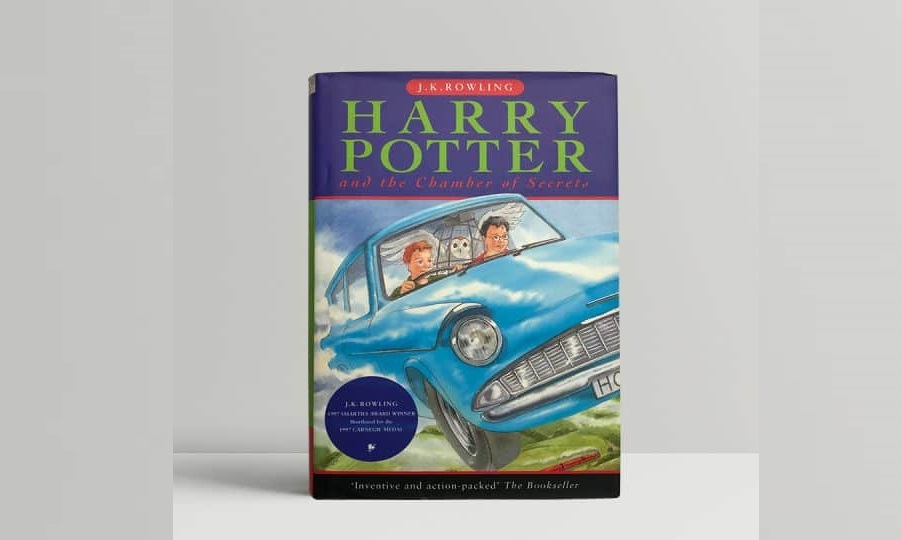
Harry returns to Hogwarts for his second year, but not before he encounters a house-elf named Dobby who warns him about danger awaiting him at the school. Mysterious attacks on students lead Harry and his friends to discover the Chamber of Secrets, a hidden area in the castle.
It’s revealed that Harry can speak Parseltongue (the language of snakes), a rare ability that stirs fear and suspicion among his peers. Eventually, Harry finds the Chamber, battles a basilisk, and saves the school from the threat, which was a memory of young Voldemort.
Harry Potter and the Prisoner of Azkaban
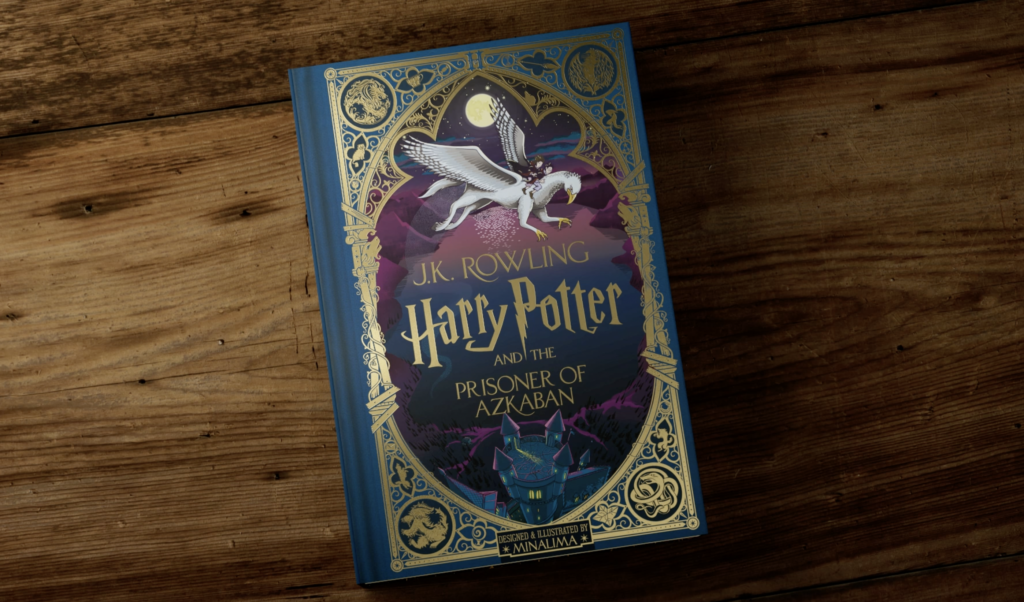
The third book introduces Sirius Black, an escaped convict from the wizarding prison, Azkaban. Harry learns that Black was his parents’ friend and allegedly betrayed them to Voldemort. However, as Harry, Hermione, and Ron investigate, they unravel the truth: the real traitor was Peter Pettigrew, another friend who has been hiding as Ron’s pet rat.
With the help of a time-traveling device, Harry and Hermione rescue Sirius and an innocent magical creature, Buckbeak, from death.
Harry Potter and the Goblet of Fire
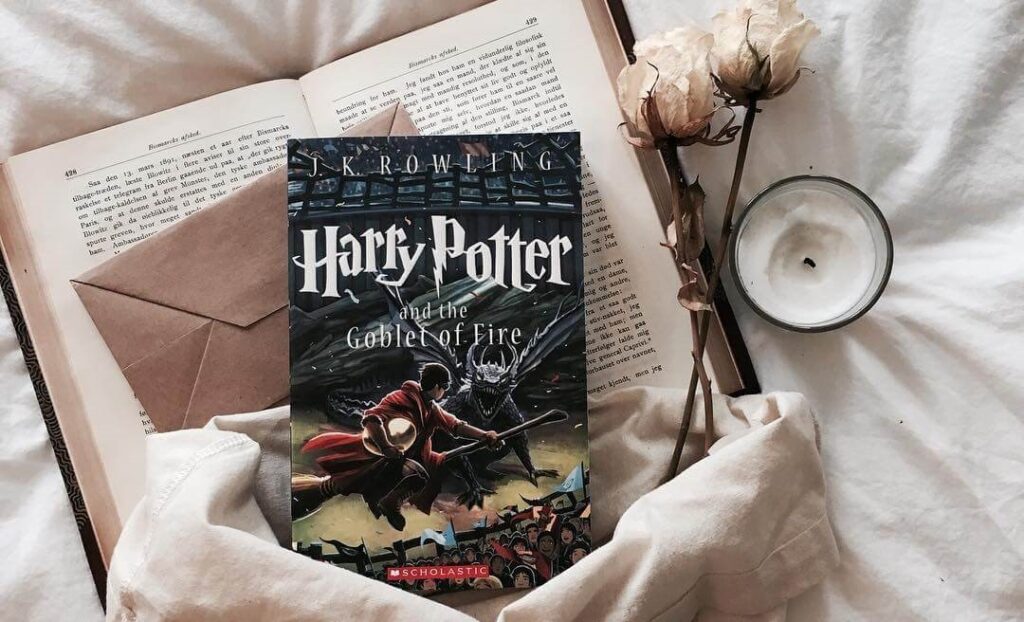
The fourth book marks a significant tonal shift in the series. Harry is mysteriously entered into the dangerous Triwizard Tournament at Hogwarts. As he competes, he experiences visions of Voldemort’s plan to return to power. Concurrently, Harry and his friends navigate typical teenage challenges, including the Yule Ball and growing romantic feelings.
The climax occurs when Harry and fellow competitor Cedric Diggory touch the Tournament trophy, which is a Portkey that transports them to Voldemort. Cedric is killed, and Harry witnesses the rebirth of Voldemort before narrowly escaping.
Harry Potter and the Order of the Phoenix
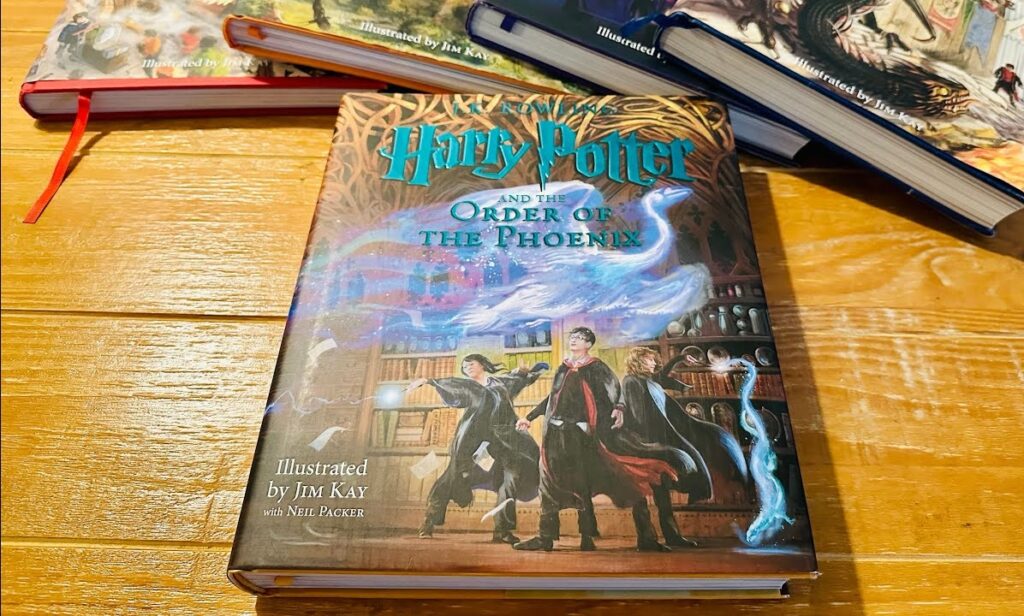
In the fifth installment, the wizarding world is divided, with many refusing to believe Harry’s claim that Voldemort has returned. Harry, Hermione, and Ron return to a tumultuous year at Hogwarts, where the Ministry of Magic interferes, appointing the despised Dolores Umbridge as the Defence Against the Dark Arts teacher.
Harry, with his friends, forms a secret group called “Dumbledore’s Army” to teach practical Defense Against the Dark Arts. Harry learns more about his connection with Voldemort through their linked thoughts.
Eventually, a battle takes place in the Ministry between the Order of the Phoenix (a group led by Dumbledore) and Voldemort’s followers, the Death Eaters, leading to the death of Sirius Black, Harry’s godfather.
Harry Potter and the Half-Blood Prince
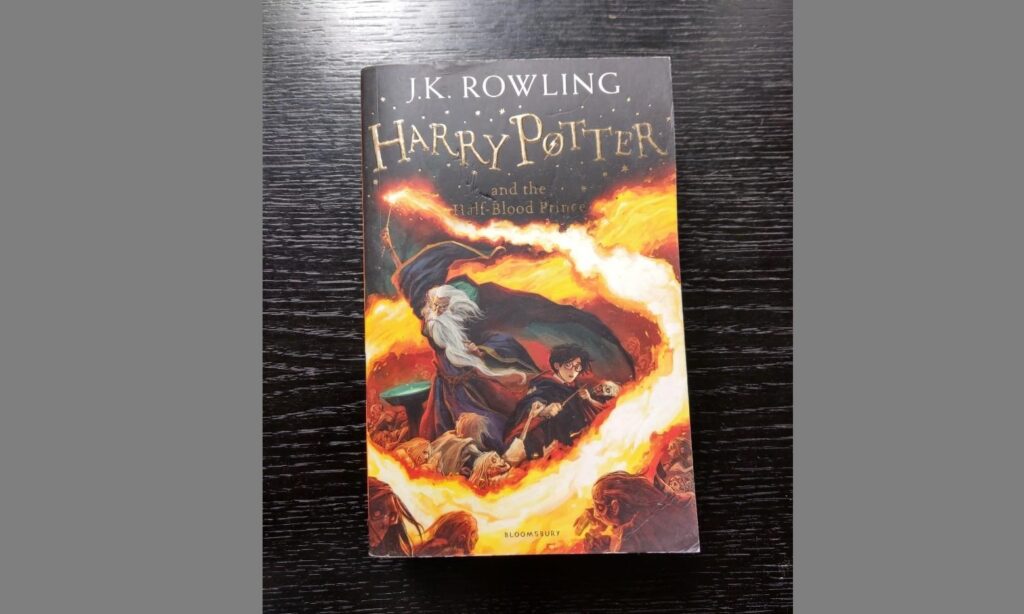
Harry begins his sixth year at Hogwarts and delves deeper into Voldemort’s past and his Horcruxes, objects in which the Dark wizard has hidden parts of his soul for immortality, through private lessons with Dumbledore. Harry comes into possession of an old textbook once owned by someone named the “Half-Blood Prince”, filled with helpful annotations.
Meanwhile, Hogwarts is not as safe as it once was with the world outside its gates at war. The story reaches its climax when Harry and Dumbledore retrieve a supposed Horcrux, and on returning, they find the school under attack. In the ensuing chaos, Severus Snape kills Dumbledore and reveals that he is the Half-Blood Prince.
Harry Potter and the Deathly Hallows
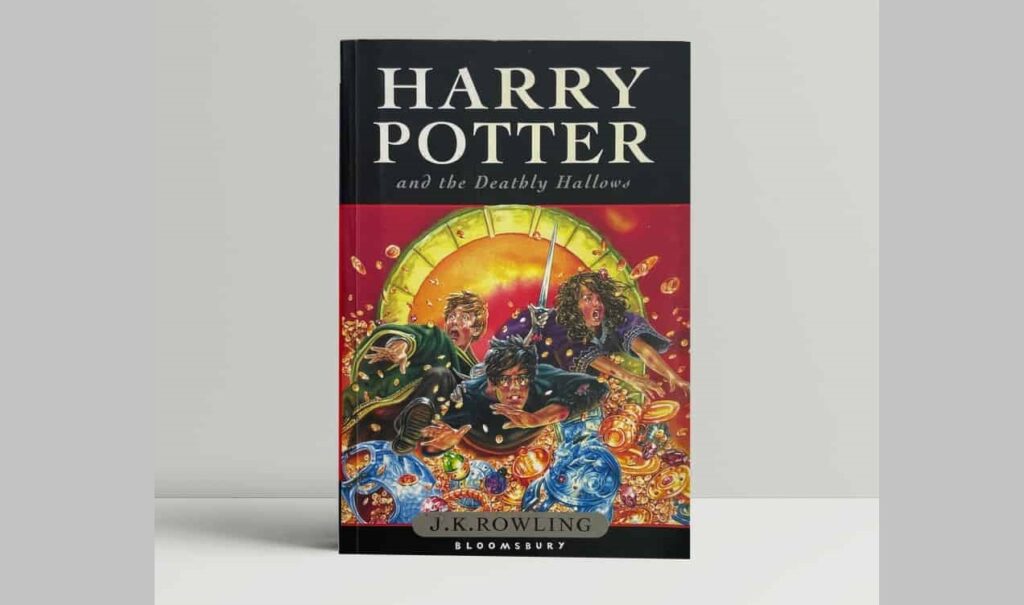
In the final book, Harry, Hermione, and Ron decide not to return to Hogwarts. Instead, they journey to destroy the remaining Horcruxes, revealing more about the depth of Voldemort’s power and cruelty. They also learn about the “Deathly Hallows”: the Elder Wand, the Resurrection Stone, and the Invisibility Cloak.
In the epic Battle of Hogwarts, many lives are lost, including Fred Weasley, Remus Lupin, and Nymphadora Tonks. It’s revealed that Harry himself is the last Horcrux, and he willingly dies to destroy the piece of Voldemort’s soul inside him. However, Harry returns from death and finally defeats Voldemort.
The book ends with an epilogue showing Harry, Hermione, and Ron, now adults, sending their own children off to Hogwarts.
Best-Selling Harry Potter Book
As of my knowledge cutoff in September 2021, “Harry Potter and the Philosopher’s Stone” (also known as “Harry Potter and the Sorcerer’s Stone” in the U.S.) is the best-selling book in the series and one of the best-selling books in the world. This isn’t surprising given it’s the first book in the series and the entry point into the magical world of Harry Potter for all readers.
Quick Fact: According to Bloomsbury, the book’s original publisher, it sold over 120 million copies worldwide by 2021.
Least Liked Harry Potter Book
Determining the “least liked” Harry Potter book can be somewhat subjective as it depends on individual reader preferences. However, based on various reader surveys and reviews, “Harry Potter and the Order of the Phoenix” often comes up as the least favorite among some fans.
Reasons often cited include the darker, more serious tone, Harry’s often angry and moody demeanor (a realistic portrayal of adolescence, but a jarring shift for some readers), and the introduction of the widely disliked character, Dolores Umbridge. That said, many readers appreciate the book’s depth and the important developments it adds to the overall series.
Darkest Harry Potter Book
“Harry Potter and the Deathly Hallows” is generally considered the darkest book in the series. It is the culmination of the escalating conflict between Harry and Voldemort and features the most substantial body count, including several beloved characters.
The threat level is incredibly high, with the wizarding world in open war, and the main characters face grueling trials and life-threatening situations. Additionally, the themes explored are more mature, including sacrifice, mortality, and the complexities of war.
The book’s tone reflects the characters’ transition into adulthood and the harsh realities of their fight against dark magic.
Appropriate Grade for Reading Harry Potter
The Harry Potter series is typically recommended for children aged 9 and up. The reading level roughly matches this age group, particularly for the early books in the series. However, the themes, plot complexity, and maturity level of the characters increase as the series progresses, which often makes the later books more suitable for older children and teenagers.
The best approach depends on the individual child’s reading level, maturity, and emotional readiness to handle some of the more intense and darker themes present in the later books. Some parents and educators choose to introduce the series over several years, allowing the child to grow with the books.
Least Successful Harry Potter Book
In terms of sales, “Harry Potter and the Prisoner of Azkaban” seems to be the least successful book in the series. While all the Harry Potter books have sold extraordinarily well, making it a very relative term, the third installment has typically reported lower sales figures compared to the rest.
However, it’s important to note that this doesn’t necessarily reflect on its quality or fan perception, as “Prisoner of Azkaban” is often ranked highly in terms of fan favorites and critical reviews.
Most Liked Girl in Harry Potter
Determining the most liked female character in the Harry Potter series can be challenging as it often comes down to individual preferences and interpretations. However, Hermione Granger, one of the series’ main characters, is often a fan favorite. Hermione is admired for her intelligence, bravery, loyalty, and strong moral compass.
Her character shows considerable growth throughout the series, evolving from a rigid rule-follower to a resourceful and flexible thinker ready to break rules for the greater good. Hermione serves as a role model for many young readers, demonstrating the importance of education, friendship, and standing up for what you believe in.
What are the key characteristics that make the Harry Potter series appealing to a global audience?
The Harry Potter series has universal appeal due to several key factors. The detailed and immersive world-building draws readers into a magical universe that feels both fantastical and grounded. The books feature relatable themes such as friendship, bravery, love, and the struggle between good and evil.
The characters are well-developed, each with their own growth arcs and personal struggles that readers can identify with. Lastly, the combination of magic, mystery, adventure, and humor makes the books engaging and entertaining for readers of all ages.
How does the tone of the Harry Potter series evolve over the course of the seven books?
The tone of the Harry Potter series matures as the series progresses, paralleling the growth of the main characters and their journey from childhood to adolescence and into young adulthood. The early books have a lighter, more whimsical tone with a focus on magical education and friendship.
As the series progresses, it gradually takes on darker and more complex themes including death, prejudice, and political corruption. The final books deal with war, sacrifice, and the harsh realities of confronting evil, mirroring the characters’ loss of innocence and coming of age.
How does J.K. Rowling use the character of Hermione Granger to challenge stereotypes?
J.K. Rowling uses Hermione Granger to challenge multiple stereotypes. Hermione is depicted as highly intelligent and academically oriented, challenging gender stereotypes about girls and intellect. Despite facing ridicule and dismissal, she remains confident in her abilities and knowledge, demonstrating that it’s valuable to be smart and studious.
Additionally, Hermione often takes the lead in problem-solving, showing that girls can be leaders and heroes.
Furthermore, through Hermione’s advocacy for the rights of house elves and other marginalized creatures, Rowling challenges the stereotype of the passive or apolitical female character, presenting Hermione as socially conscious and proactive about fighting injustice.
Why is “Harry Potter and the Philosopher’s Stone” the best-selling book in the series?
“Harry Potter and the Philosopher’s Stone” is the best-selling book in the series likely because it is the introduction to the Harry Potter universe. Readers need to start with the first book to understand the series’ premise, characters, and world-building. It’s the entry point for all readers into the series, making it the most widely purchased.
Additionally, its lighter tone and simpler language make it accessible to younger readers and those new to the fantasy genre.
How does the character development in the Harry Potter series contribute to its overall narrative arc?
Character development in the Harry Potter series is crucial to its overall narrative arc. As the characters grow and change, they drive the plot forward and shape the series’ themes. For example, Harry’s journey from an unknowing child to a brave and self-sacrificing hero forms the series’ backbone.
The maturation of characters like Hermione, Ron, and Neville illustrates themes of friendship, courage, and self-discovery. Even secondary characters, such as Snape and Draco, undergo significant development, adding layers of complexity to the story and challenging readers’ initial perceptions.
Why do some readers consider “Harry Potter and the Order of the Phoenix” as the least favorite book in the series?
“Harry Potter and the Order of the Phoenix” is considered the least favorite book by some readers due to several reasons. Firstly, the book represents a tonal shift in the series, dealing with heavier themes such as political corruption, death, and psychological trauma.
Secondly, Harry, under the stress of trauma and adolescent turmoil, often acts angry and irritable, a stark contrast to his character in previous books. Lastly, the introduction of Dolores Umbridge, one of the most despised characters in the series, adds to the book’s darker and more frustrating atmosphere.
What is the significance of the “Deathly Hallows” in the final book of the Harry Potter series?
The “Deathly Hallows” – the Elder Wand, the Resurrection Stone, and the Invisibility Cloak – play a crucial role in the final book. They symbolize power, resurrection, and invisibility, respectively, representing different approaches to confronting death and power. They tie into the book’s central themes of mortality, sacrifice, and the ethical use of power.
Harry’s decision to reject the power of the Elder Wand and Resurrection Stone reflects his maturity and moral integrity. The Invisibility Cloak, which Harry uses to protect and help others throughout the series, epitomizes the selfless use of power, underscoring one of the series’ key messages.
How does the Harry Potter series incorporate elements of British culture?
The Harry Potter series is steeped in British culture and tradition. It’s reflected in the setting, from the quintessential British boarding school of Hogwarts to locations like Diagon Alley and Hogsmeade, which evoke a distinctly British small-town charm.
References to British food, sports (Quidditch resembles traditional British sports like rugby and cricket), education system, and social class hierarchies are present.
Quick Fact: The series also plays on British folklore and mythology, such as the legends of witches and wizards, magical creatures, and alchemy, further embedding the narrative in the British cultural context.
How is the theme of love portrayed in the Harry Potter series?
The theme of love is central to the Harry Potter series and is portrayed in various forms. The love between Harry’s parents and their selfless sacrifice is a driving force behind the story, protecting Harry and empowering him to confront Voldemort. The friendship between Harry, Ron, and Hermione is another strong representation of love.
Romantic love also surfaces, especially in the later books, with relationships developing between characters. Furthermore, Dumbledore often emphasizes love as the ultimate power, able to overcome dark magic and offering redemption and hope.
Why is “Harry Potter and the Prisoner of Azkaban” often ranked highly in terms of fan favorites and critical reviews despite its lower sales compared to other books in the series?
“Harry Potter and the Prisoner of Azkaban” is often ranked highly due to its complex plot, the introduction of fan-favorite characters like Sirius Black and Remus Lupin, and its exploration of Harry’s past. It is the book where the series begins to take on a darker tone and deeper themes, which many readers appreciate.
It also lacks a direct confrontation with Voldemort, providing a change of pace that focuses more on character development, unraveling past mysteries, and setting the stage for future events.
How does the Harry Potter series handle the theme of death?
The theme of death is an integral part of the Harry Potter series. It’s introduced early with the death of Harry’s parents and continues with the deaths of other key characters. Death is portrayed as a natural part of life, something to be accepted rather than feared. Characters who fear death, like Voldemort, are shown to cause harm and destruction.
The series also explores grief and loss, particularly through Harry’s experiences, presenting an honest and empathetic portrayal of these complex emotions.
What role does prophecy play in the Harry Potter series?
Prophecy plays a significant role in the Harry Potter series, driving the narrative and influencing the characters’ decisions. The prophecy about Harry and Voldemort sets the stage for their inevitable confrontation and heavily affects Harry’s journey and destiny. It also influences Voldemort’s actions, illustrating the self-fulfilling nature of prophecies.
However, the series also emphasizes the importance of choice, suggesting that while prophecies may guide events, individuals’ decisions ultimately shape their destinies.
How does J.K. Rowling use humor in the Harry Potter series?
Humor is used throughout the Harry Potter series to lighten the narrative’s darker elements and endear the characters to the readers. Characters like Fred and George Weasley provide comic relief with their pranks and quips. Situational humor arises from the magical world’s quirks and the characters’ interactions.
Rowling’s use of humor not only entertains but also provides insight into characters, supports world-building, and balances the series’ more intense moments.
How does the character of Severus Snape contribute to the complexity of the Harry Potter series?
Severus Snape adds significant complexity to the series. Initially presented as a villainous character, Snape’s true allegiance and motivations are gradually revealed, challenging readers’ perceptions. His backstory provides depth to his character, showcasing a tragic figure who made questionable choices out of love and regret.
His ultimate sacrifice underscores the series’ theme of redemption and the complexity of human nature. Snape’s character prompts readers to consider the gray areas between good and evil, contributing to the series’ depth and richness.
Conclusion
In conclusion, the Harry Potter series, with its engaging characters, rich plot, and immersive world-building, continues to captivate readers worldwide. Its enduring popularity stems from its exploration of universal themes, its ability to grow with readers, and its balance of humor, adventure, and emotional depth.
Whether you’re revisiting the series or embarking on your journey into the wizarding world, the magic of Harry Potter remains as enchanting as ever.
